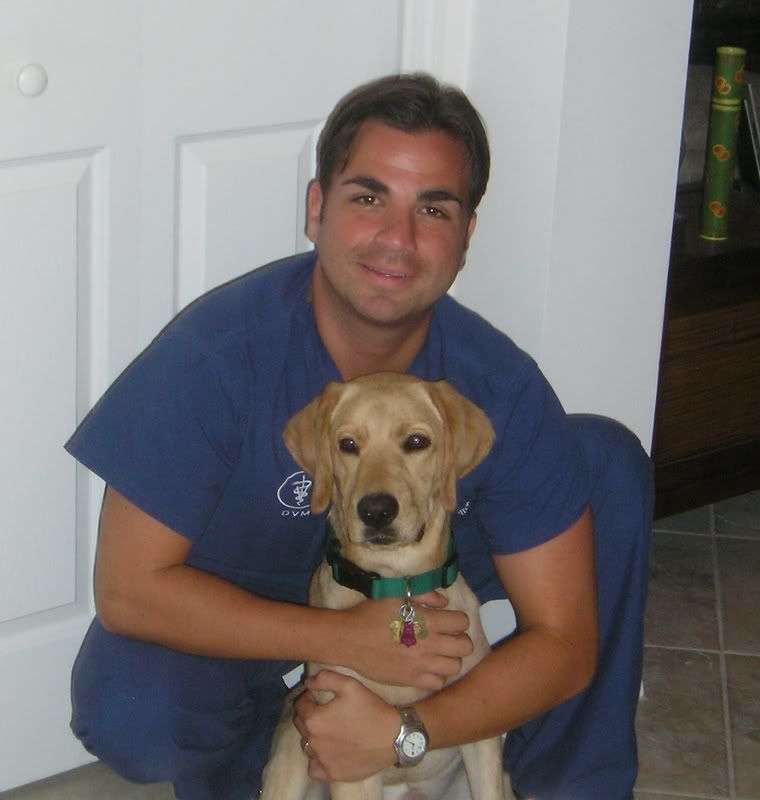- Cancer in Pets and People - Can the Similarities Provide a Cure?
- Have a Happy and Safe Thanksgiving!
Transcript of this week's episode of The Web-DVM:
Welcome my pet loving friends, to The Web-DVM. I am your host, Dr. Roger Welton, practicing veterinarian and Veterinary News Network Reporter.
When it comes to the dreaded diagnosis of cancer - we all dream of an eventual cure. Believe it or not, thanks to our canine friends, that dream may not be too far away.
Finding a cure for cancer is one of science’s most challenging and elusive goals. Thanks to our pets, and the fascinating work of a new breed of scientist, the comparative oncologist, some of the pieces of this complex puzzle are coming together.
The statistics about cancer in our pets are surprising. Estimates from the Morris Animal Foundation state that fifty percent of dogs will develop a cancer at some point in their lifetimes and half of those will die from the disease.
As you can imagine, these alarming statistics have gained the attention of many scientists because our dogs and cats often make good models for cancer research. The field of comparative oncology brings together veterinary oncologists, human medical oncologists, academic cancer research centers and the pharmaceutical industry.
At the National Cancer Institute’s Center for Cancer Research, scientists say that because our pets share our environment and suffer from many naturally occurring cancers, they are probably good indicators of potential causes. In addition, there are many pet cancers that have similar or even identical biological characteristics as human cancers.
But beyond all of the objective data, the strong desire of pet owners to see their beloved dogs and cats live longer means that many new therapeutic options can be tried in order to save the pet. And, since more than 6 million dogs develop cancer each year, veterinarians and cancer researchers can evaluate these new therapies, refine them and potentially provide hope to both pet owners and to the families devastated by a cancer diagnosis.
Perhaps one of the most impressive advancements in comparative oncology is the development of a “canine cancer vaccine”. This novel treatment was recently granted full licensure and is now available for dogs suffering from one of the most common forms of cancer, canine malignant melanoma.
This cancer can be seen in any breed of dog and is highly aggressive. Cancer cells may start in the mouth, footpad or nail bed, but often spread out to affect other parts of the body. For most dogs, a diagnosis of canine malignant melanoma means the pet has just a few months to live, even with surgical treatment and chemotherapy doesn’t seem to help.
But, thanks to new research, the cancer vaccine (called ONCEPT®) is extending the lives of these dogs and giving hope to humans. Some studies for the vaccine showed that treated pets lived an additional three years after diagnosis.
ONCEPT® uses a human protein to stimulate the dog’s immune system into attacking the cancer cells. Since malignant melanomas have such a tendency to spread throughout the body, this type of treatment helps to find and destroy small cancer clusters even after the main tumor is surgically removed. After the initial set of four vaccines every two weeks, patients receive a “booster” vaccine every 6 months.
The implications of this type of therapy are, of course, amazing for our pets. But further, they could have far reaching positive consequences for human cancer patients as well. Research in comparative oncology is exciting and will no doubt uncover many new potential therapies.
That is my show for this evening. I will be taking next week off for the Thanksgiving holiday, but will be back with you in weeks. Remember to keep your pets away from turkey bones and out of the garbage. The holiday season from a veterinary standpoint is one of vomiting, diarrhea, and GI obstructions from cases of pet dietary indiscretion. May you and your pets have a peaceful and enjoyable Thanksgiving holiday.
Don't forget to catch my live call-in radio show Wednesdays 9PM EST. Listen via podcast live or archived here:
Blog Talk Radio
Dr. Roger Welton is the President and chief veterinarian at Maybeck Animal Hospital in West Melbourne Florida, as well as CEO of the veterinary advice and health management website Web-DVM.net.



